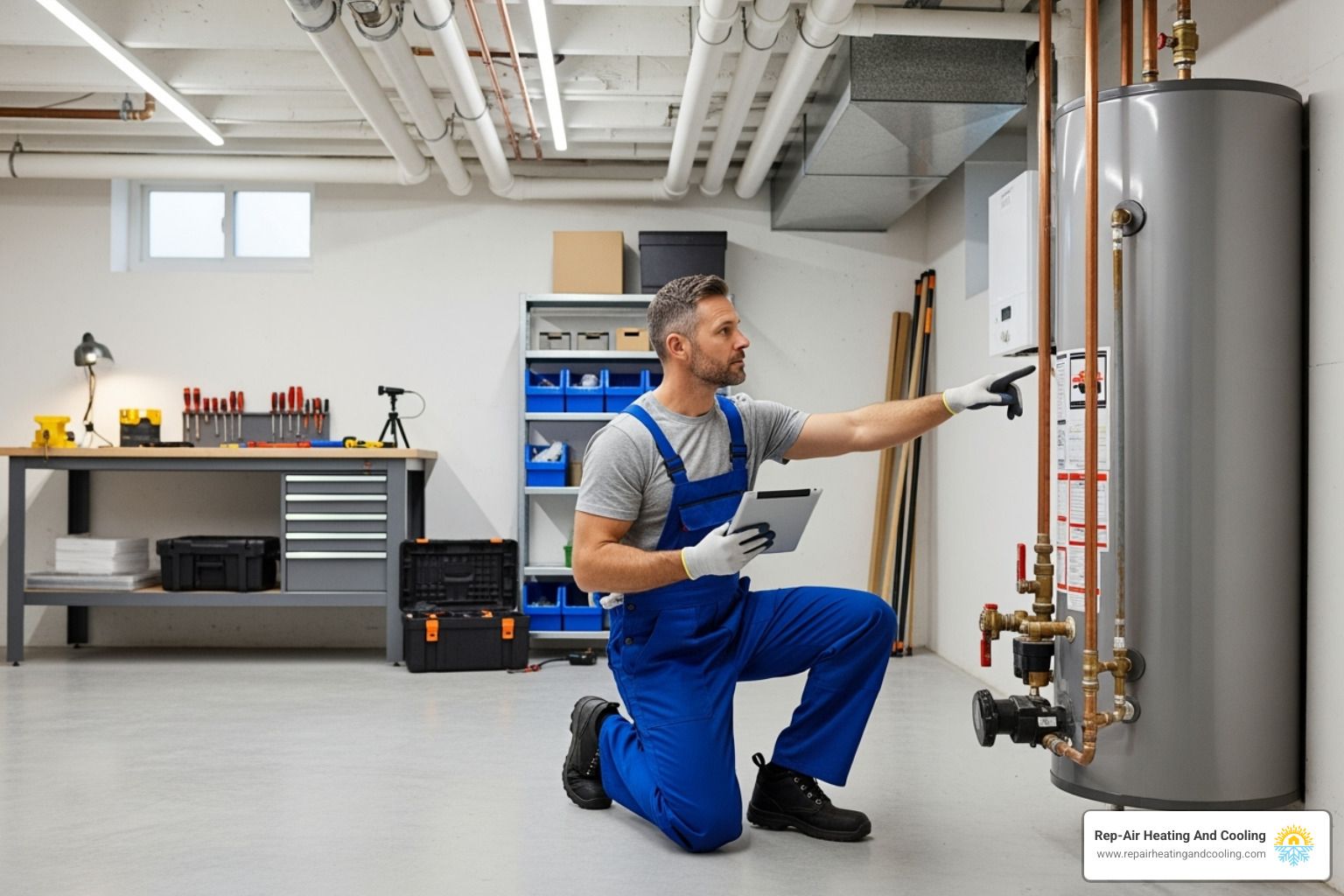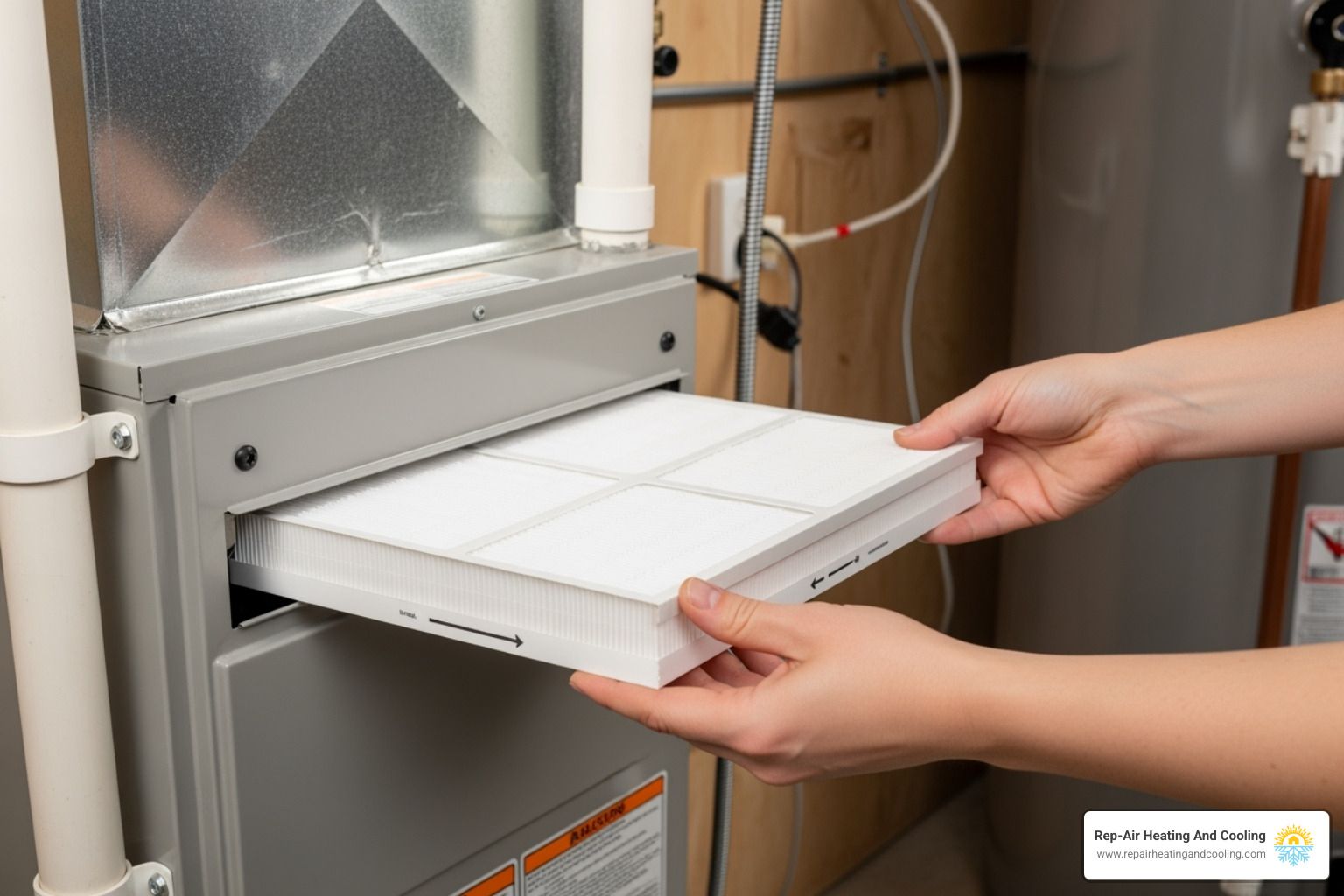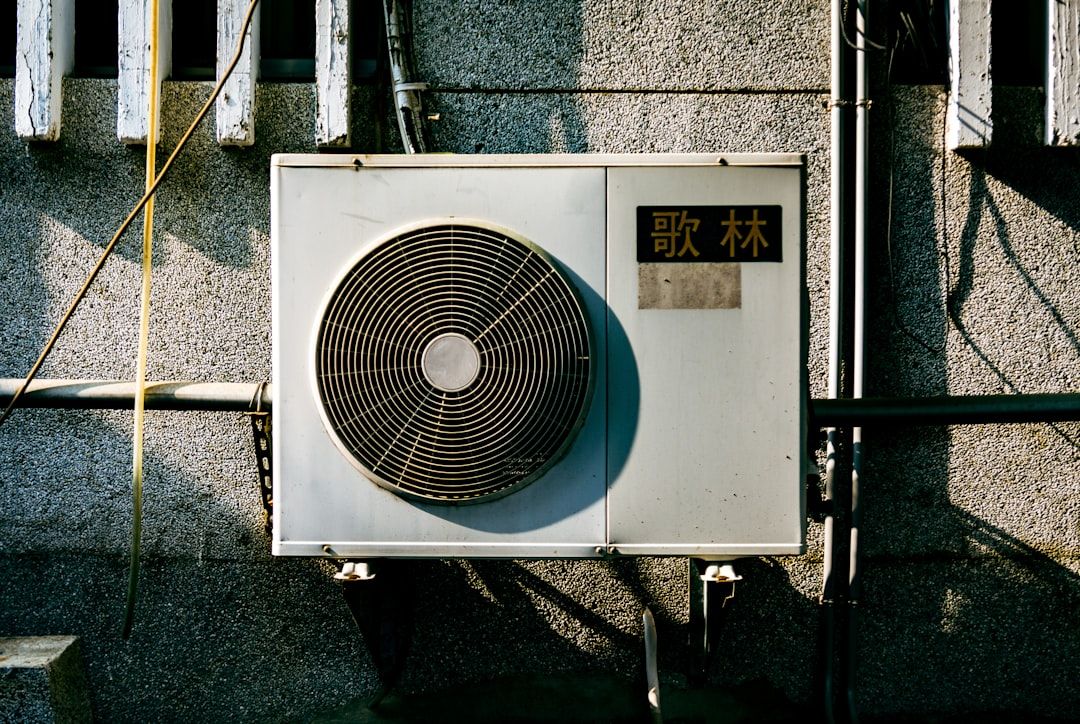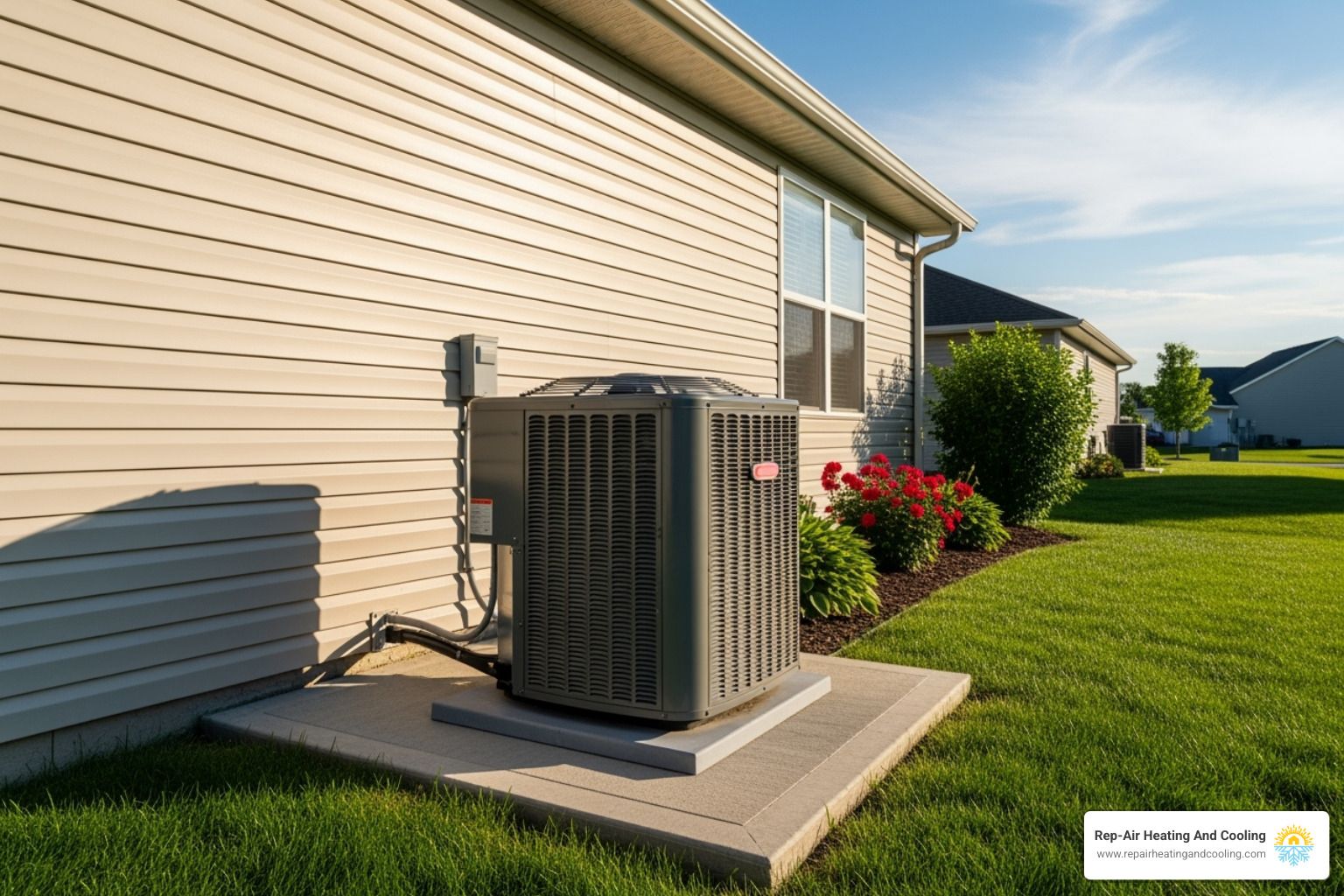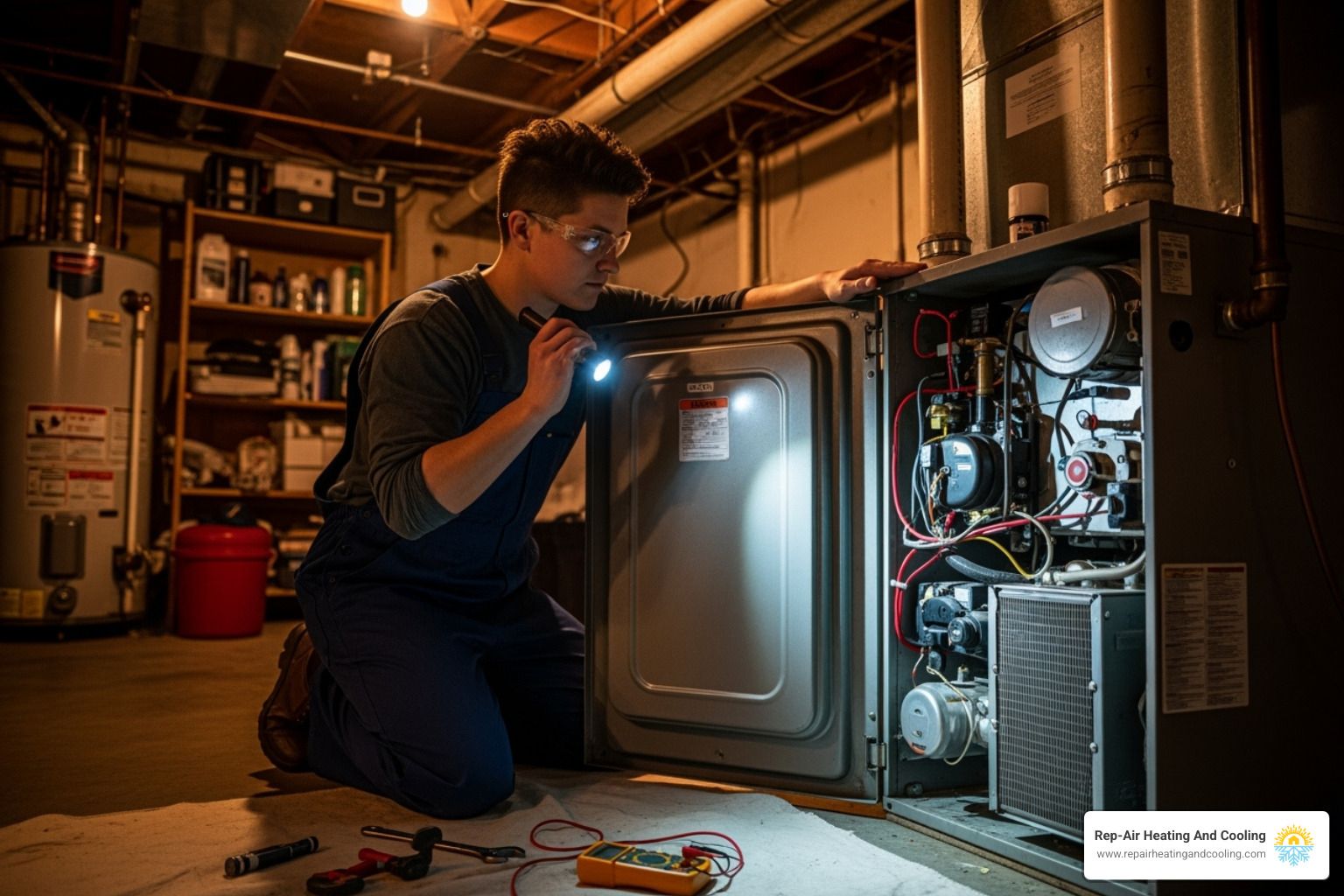Don’t Wait for Disaster: How Regular Plumbing Checkups Save You Money
IMPORTANT NOTE: . Our company is located in British Columbia, Canada. If you are reading this article in another location, we hope you enjoy the information, but unfortunately we cannot service you.

Table of Contents
ToggleWhy Preventative Maintenance Plumbing Protects Your Home and Wallet
Preventative maintenance plumbing is the practice of regularly inspecting, cleaning, and servicing your home’s plumbing system before problems occur. Just like your lawn or garden needs regular care, your plumbing system requires consistent attention to prevent small issues from becoming expensive disasters.
Key preventative plumbing maintenance tasks include:
- Monthly: Check for leaks around faucets, toilets, and exposed pipes
- Quarterly: Clean drain stoppers and faucet aerators
- Annually: Flush water heater, inspect sewer lines, test water pressure
- As needed: Clear slow drains with baking soda and vinegar
The research shows the stakes are high. A single leaky faucet can waste up to 30 gallons of water daily, while a running toilet wastes up to 2 gallons per minute. Small household leaks add up to gallons of lost water every day.
Major plumbing repairs can cost thousands of dollars – money that’s easily saved with regular maintenance. Most homeowners insurance policies won’t cover pipe damage from wear and tear, leaving you responsible for both the repair costs and any water damage to your home.
The good news? Most preventative maintenance tasks are simple enough for homeowners to handle themselves. Others require professional help but cost far less than emergency repairs.
An ounce of prevention truly is worth pounds of cure when it comes to your plumbing system.
The High Cost of Neglect: Why Proactive Plumbing Care is a Smart Investment
Picture this: it’s 2 AM, and you wake up to the sound of rushing water. Your basement is flooding, your water heater has burst, and you’re frantically searching for a plumber who’ll answer at this ungodly hour. Sound like a nightmare? For many homeowners, this scenario becomes an expensive reality.
The truth is, we rarely think about our plumbing until disaster strikes. That innocent drip from the kitchen faucet or the toilet that runs a little too long seems harmless enough. But here’s what most homeowners don’t realize: preventative maintenance plumbing isn’t just about avoiding inconvenience—it’s one of the smartest financial decisions you can make for your home.
Emergency plumbing calls are costly. Plumbers charge premium rates for after-hours service, weekends, and holidays. What could have been a simple $50 repair during regular business hours suddenly becomes a $300 emergency call. By staying ahead of problems with regular maintenance, you avoid those panic-inducing moments and the hefty bills that come with them.
Let’s talk numbers for a moment. That seemingly harmless leaky faucet can waste up to 30 gallons of water daily—that’s nearly 11,000 gallons per year! A running toilet is even worse, wasting up to 2 gallons every minute. Beyond the environmental impact, these “small” issues add up to hundreds of dollars on your annual water bill. Regular maintenance catches these water wasters early, keeping more money in your pocket.
Here’s something that might surprise you: your homeowners insurance likely won’t cover pipe repairs from normal wear and tear. While sudden, accidental water damage might be covered, the actual pipe replacement often isn’t. This means when your aging pipes finally give out, you’re responsible for both the repair costs and any resulting water damage. Preventative maintenance plumbing helps prevent that wear and tear from reaching the breaking point.
Beyond immediate savings, a well-maintained plumbing system increases your property value. Imagine trying to sell a home with known plumbing issues or telltale water stains on the ceiling. Not exactly a selling point that gets buyers excited. Regular upkeep keeps your home in top condition and protects your investment.
Most importantly, proactive care prevents structural damage. What starts as a small leak behind a wall can lead to rotted framing, damaged drywall, and dangerous mold growth. These problems can cost tens of thousands to repair and pose serious health risks to your family.
The good news? Most preventative maintenance is straightforward and affordable. For more insights on how professional services can keep your plumbing running smoothly, check out the Professional Plumbing Service Benefits.
Common Signs of Hidden Plumbing Problems
Your home’s plumbing system is constantly communicating with you—you just need to know how to listen. Most of our pipes and water lines are tucked away behind walls or under floors, but they’re always sending subtle signals when trouble is brewing.
Slow drains are like your plumbing system’s way of saying “help me, I’m struggling!” When water takes longer than usual to disappear down your bathroom or kitchen sink, it’s warning you that a clog is forming. Don’t wait until you’re standing in ankle-deep shower water to take action.
Ever hear gurgling noises coming from your drains or toilet after flushing? That’s not your plumbing trying to talk to you—it’s actually trapped air fighting to escape through a blockage. Think of it as your pipes gasping for breath.
Foul odors wafting up from drains are never a good sign. These unpleasant smells usually indicate bacteria buildup, decomposing waste, or even a serious sewage blockage somewhere in your system. If mysterious odors are making your home less pleasant, our guide on Drain Foul Odor Plumbing Solutions can help you tackle the problem.
Low water pressure can turn your morning shower into a frustrating trickle. While sometimes it’s just a clogged faucet aerator (an easy fix!), it can also signal bigger problems like hidden leaks or blockages in your main water line. If you’re wondering what’s behind your weak water flow, we explain the common causes in Why Home Water Pressure is Low.
Keep an eye on your water bill. Sudden spikes without any change in your usage habits often mean you have a hidden leak somewhere. Your water meter can be a detective here—if it’s still moving when all your water is turned off, you’ve got a leak.
Discolored water—whether rusty brown, greenish-blue, or any color other than clear—signals trouble. This usually points to pipe corrosion or water heater issues that need attention before they become bigger problems.
Finally, those water stains on ceilings or walls are red flags you shouldn’t ignore. They’re proof that water is escaping where it shouldn’t be, potentially causing hidden damage and creating perfect conditions for mold growth. If you’ve spotted these telltale signs, our tips on how to Fix Ceiling Water Spots can help you address the issue.
Understanding Your Water Pressure
Water pressure might seem like one of those “set it and forget it” aspects of your home, but getting it right is crucial for your plumbing system’s health and longevity.
Most homes perform best with water pressure between 40 and 60 pounds per square inch (psi). This range gives you good flow for showers and washing while protecting your pipes and appliances from unnecessary stress.
Here’s what many homeowners don’t realize: high water pressure can be just as problematic as low pressure. When your pressure regularly exceeds 80 psi, it puts tremendous strain on your entire plumbing system. Think of it like high blood pressure in humans—everything works harder and wears out faster.
High pressure risks include accelerated pipe wear, increased likelihood of leaks, and shortened lifespans for your washing machine, dishwasher, and water heater. Those appliances aren’t designed to handle excessive pressure day after day.
Testing your water pressure is simple and inexpensive. You can pick up a pressure gauge at any hardware store for under $20. Just attach it to an outdoor spigot or your washing machine connection, turn on the water, and read the dial. It’s like taking your plumbing system’s blood pressure.
If your pressure consistently reads above 80 psi, installing a pressure regulator is a wise investment. This device acts like a guardian for your plumbing, maintaining safe, consistent pressure throughout your home and protecting everything from your pipes to your appliances.
Your Ultimate Preventative Maintenance Plumbing Checklist
Taking a proactive approach to your home’s plumbing can save you a world of trouble and expense. We’ve put together a comprehensive preventative maintenance plumbing checklist that combines tasks you can do yourself with those best left to the professionals. This checklist provides a clear action plan for homeowners to keep their plumbing systems in tip-top shape.
| Task | Recommended Frequency | DIY vs. Professional |
|---|---|---|
| Check for Leaks | Monthly / Weekly | DIY |
| Clean Faucet Aerators | Quarterly | DIY |
| Clean Drain Stoppers/Screens | Monthly | DIY |
| Test Toilet Flapper | Monthly | DIY |
| Clear Slow Drains | As Needed | DIY (Baking Soda/Vinegar) |
| Locate Main Shut-Off Valve | Once | DIY |
| Inspect Visible Pipes for Corrosion | Monthly | DIY |
| Flush Water Heater | Annually | Professional |
| Inspect Anode Rod (Water Heater) | Every 2-3 Years | Professional |
| Test T&P Relief Valve (Water Heater) | Annually | DIY (Carefully) / Professional |
| Test Water Pressure | Annually | DIY |
| Inspect Washing Machine Hoses | Annually | DIY |
| Replace Washing Machine Hoses | Every 5 Years | DIY |
| Test Sump Pump | Quarterly | DIY |
| Clean Sump Pit | Annually | DIY |
| Inspect Septic System | Every 1-3 Years | Professional |
| Pump Septic Tank | Every 3-5 Years | Professional |
| Sewer Line Inspection | Every 2-3 Years | Professional |
| Winterize Outdoor Plumbing | Annually (Fall) | DIY |
| Clean Gutters & Downspouts | Annually (Fall) | DIY |
| Professional Plumbing Inspection | Every 1-2 Years | Professional |
For more comprehensive maintenance tips, see this guide: For more comprehensive maintenance tips, see this guide.
DIY Preventative Maintenance Plumbing Tasks You Can Do Today
We believe in empowering homeowners to take charge of their plumbing health. Many crucial preventative maintenance plumbing tasks are simple, require minimal tools, and can be done by us, the homeowners, in just a few minutes.
First, make it a habit to check for leaks regularly. This means visually inspecting all exposed pipes under sinks, behind toilets, and around appliances like washing machines and dishwashers. Look for drips, puddles, or even signs of moisture and corrosion like blue/green deposits or rust on pipes. Check your faucets for drips and listen for running toilets. If you suspect a hidden leak, reading your water meter can be a great detective: if the meter is still moving when all water is off in your home, you likely have a leak.
Cleaning faucet aerators is a quick fix for decreased water pressure or a haphazard spray. Calcium buildup is a common culprit. Unscrew the aerator from the faucet spout, separate the components, and soak them in white vinegar to dissolve mineral deposits. Scrub any remaining buildup with an old toothbrush, then rinse and reassemble.
Similarly, cleaning drain stoppers and strainers is essential. These humble devices catch hair, food particles, and soap scum before they enter your pipes. Regularly remove and clean them to prevent accumulation that leads to clogs.
To test your toilet flapper for proper sealing, add a few drops of food coloring to the toilet tank. Don’t flush. If color appears in the bowl without flushing after about 15-30 minutes, your flapper isn’t sealing properly and needs to be replaced. This simple test can save hundreds of gallons of wasted water.
We highly recommend using drain screens or strainers in all sinks and showers to catch debris before it goes down the drain. This is a simple, inexpensive way to prevent most clogs.
For slow drains, a mixture of baking soda and vinegar is a safe and effective DIY solution. Pour about half a cup of baking soda down the drain, followed by half a cup of white vinegar. Let it sit for 30 minutes to an hour (or even overnight for tough clogs), then flush with hot water. This creates a fizzing reaction that can break down minor blockages. Unlike harsh chemical drain cleaners, which can erode your pipes and cause serious damage over time, this natural method is pipe-friendly. For more effective DIY methods, check out our Quick Fixes for Clogged Drains.
Finally, a vital preventative maintenance plumbing task is knowing the location of your main water shut-off valve. In an emergency, like a burst pipe, knowing how to quickly turn off your home’s water supply can prevent extensive water damage. Make sure everyone in your household knows where it is and how to operate it.
Professional Preventative Maintenance Plumbing: When to Call the Experts
While many preventative maintenance plumbing tasks are perfect for DIY enthusiasts, some jobs require the specialized knowledge, tools, and experience of a professional plumber. Knowing when to call in the experts can prevent more serious problems and ensure your system is handled correctly.
One of the most important annual professional tasks is water heater flushing. Over time, sediment builds up at the bottom of your water heater tank, reducing its efficiency and lifespan. A professional can properly flush the tank, inspect the anode rod (which prevents corrosion), and test the temperature and pressure (T&P) relief valve to ensure it’s functioning correctly. Tankless water heaters also require annual professional checks, including cleaning of heating coils every two years, as their maintenance differs from traditional storage tanks.
For underground systems, a sewer line inspection is crucial, especially if you have older pipes (like cast iron or clay) or mature trees nearby. Tree roots are notorious for infiltrating sewer lines, causing blockages and even structural damage. A professional plumber can use a camera inspection to visually identify troublesome cracks, pipe damage, or root intrusions, allowing for targeted solutions like snaking or even pipe lining before a full-blown backup occurs. If you’re connected to a municipal sewer, having the line snaked annually can proactively address tree root issues.
If your home has a septic system, septic tank pumping and regular inspection are non-negotiable. The frequency depends on tank size and household usage, but regular maintenance prevents costly backups and ensures the system functions properly.
When it comes to water pressure issues, especially if your home’s pressure is consistently above 80 psi, a professional can install or adjust a pressure regulator. This protects your entire plumbing system from the damaging effects of high pressure.
For persistent clogs that resist DIY methods, or if you suspect a deeper blockage, it’s time to call a professional. They have specialized tools like drain snakes and hydro-jetters that can clear even the toughest blockages without damaging your pipes. For insights into how professionals tackle various issues, see Common Plumbing Problems Solved.
Finally, we recommend annual professional plumbing inspections. A skilled plumber can identify potential issues that might go unnoticed by an untrained eye, such as subtle leaks behind walls, corroding pipes, or signs of impending fixture failure. They can also test components like sump pumps annually to ensure they’re ready to protect your basement from flooding. Investing in routine inspections is a small commitment that offers greater peace of mind and significant long-term savings.
Advanced Care: Maintaining Major Systems and Preparing for Winter
When we talk about preventative maintenance plumbing, the biggest impact comes from caring for your home’s major systems. Your water heater, sewer lines, and seasonal preparations aren’t just routine tasks – they’re investments in protecting the most expensive parts of your plumbing system.
Think of it this way: replacing a water heater can cost thousands, while a sewer line replacement can easily run into five figures. Meanwhile, a burst pipe from winter freeze can flood your entire basement in hours. That’s why these systems deserve our special attention and care.
Water Heater Maintenance Essentials
Your water heater is probably one of the hardest-working appliances in your home, yet it’s often the most neglected. Tucked away in a basement or utility room, it quietly heats water for every shower, load of dishes, and washing machine cycle.
Annual flushing is the most important thing you can do for your water heater. Over the months, minerals like calcium and magnesium settle at the bottom of the tank like sediment in a riverbed. This buildup acts like a blanket between the heating element and the water, forcing your heater to work much harder. The result? Higher energy bills and a shorter lifespan for your unit.
During a professional flush, they’ll also check your anode rod. This clever little component is designed to sacrifice itself to protect your tank from rust. It’s literally called the “sacrificial rod” because it corrodes so your tank doesn’t have to. Most anode rods need inspection every 2-3 years and replacement when they’re heavily corroded.
The Temperature & Pressure (T&P) relief valve might be small, but it’s your safety hero. This valve prevents your water heater from becoming a dangerous pressure bomb if something goes wrong. Testing it annually ensures it’s ready to do its job, though be careful – if the valve doesn’t reseal properly after testing, you’ll have a leak on your hands.
We recommend keeping your water heater temperature around 120°F. This sweet spot gives you plenty of hot water while preventing scalding and keeping energy costs reasonable. If you have a tankless water heater, its maintenance needs are different – these units typically need annual descaling and burner cleaning to keep running efficiently.
Sewer Line and Septic System Care
Out of sight shouldn’t mean out of mind when it comes to your sewer system. These underground workhorses handle all your home’s wastewater, and when they fail, the results are both expensive and unpleasant.
Tree root intrusion is the biggest enemy of sewer lines. Roots are like nature’s plumbers – they’re constantly searching for water sources, and even tiny cracks in your pipes send out a “come here” signal. Once roots find their way in, they grow and multiply, eventually creating major blockages or even crushing older pipes.
Regular camera inspections are your best defense, especially if you have mature trees near your sewer line or an older home with cast iron or clay pipes. These inspections can spot trouble before you’re dealing with sewage backing up into your basement.
For homes with septic systems, the rules are a bit different but just as important. Your septic tank needs regular pumping – typically every 3-5 years – to remove the solid waste that accumulates over time. Skip this maintenance, and you’re asking for a messy, expensive backup.
Here’s the golden rule for both sewer and septic systems: be very careful what goes down your drains. Toilets should only handle human waste and toilet paper. Those “flushable” wipes? They’re not actually flushable. Grease, oil, harsh chemicals, and feminine hygiene products can all cause serious problems. Your pipes and septic system will thank you for being picky about what you flush.
How to Winterize Your Plumbing and Prevent Frozen Pipes
Living in the Lower Mainland, we know winter can surprise us with some seriously cold snaps. When temperatures drop below freezing, water in your pipes can freeze, expand, and cause pipes to burst. The damage from just one burst pipe can be devastating – and expensive.
Insulating exposed pipes is your first line of defense. Focus on pipes in unheated spaces like basements, crawl spaces, and attics. Even basic foam pipe insulation from the hardware store can prevent disaster. Pay special attention to pipes along exterior walls or in poorly heated areas.
Don’t forget to seal cracks and gaps where cold air might sneak in, especially around areas where pipes enter your home. A little caulk now can prevent a big headache later.
Your outdoor faucets and sprinkler systems need special attention before winter arrives. Shut off the water supply to these lines from inside your home, then open the outdoor spigots to drain any remaining water. Disconnect and drain all garden hoses – water trapped in a hose can freeze and damage both the hose and the faucet it’s connected to.
If you have an irrigation system or backflow prevention device, these typically need to be professionally winterized since they often can’t be completely drained without special equipment.
For comprehensive winter preparation tips, check out our detailed guide on How to Prevent Frozen Pipes. A little preparation in the fall can save you from a watery disaster when winter weather hits.
Conclusion
Taking care of your plumbing doesn’t have to be overwhelming. Throughout this guide, we’ve explored how preventative maintenance plumbing is really about making smart choices that protect both your home and your wallet. It’s the difference between being proactive and reactive – and trust us, proactive is always better!
The benefits speak for themselves. Regular maintenance saves you from those dreaded emergency repair bills that can cost thousands of dollars. It helps you conserve water (and lower those monthly bills), while extending the life of your entire plumbing system. Most importantly, it gives you peace of mind knowing your home is protected from water damage and costly surprises.
Whether you’re tackling simple DIY tasks like checking for leaks and cleaning faucet aerators, or scheduling professional services like water heater flushing and sewer line inspections, every small step adds up to big protection for your home. An ounce of prevention really is worth a pound of cure – especially when that “cure” could involve ripping up floors or replacing water-damaged drywall!
At Rep-Air Heating And Cooling, we understand that your home is more than just a building – it’s where your family creates memories. That’s why we treat every customer like family, providing comprehensive HVAC, plumbing, and electrical services throughout the Lower Mainland. We believe in delivering the best customer service possible and helping you maintain a safe, comfortable, and efficient home.
Ready to give your plumbing system the professional attention it deserves? For a comprehensive plumbing inspection in the Lower Mainland, explore our services in Mission and find how we can help keep your plumbing running smoothly year-round. Don’t wait for a plumbing disaster to strike – let us help you stay ahead of problems before they start!
Request your service today!
Our team of highly trained technicians are standing by ready to help you out with all of your service, repair, and installation needs. You can count on us for on-time repairs, professional installation, and the friendliest customer service in town!Contact Rep-Air Heating & Cooling today to get started with service by requesting a quote online, or by phone at (844) 218-3362.
Request Service
Contact us today to request an estimate or schedule service.






